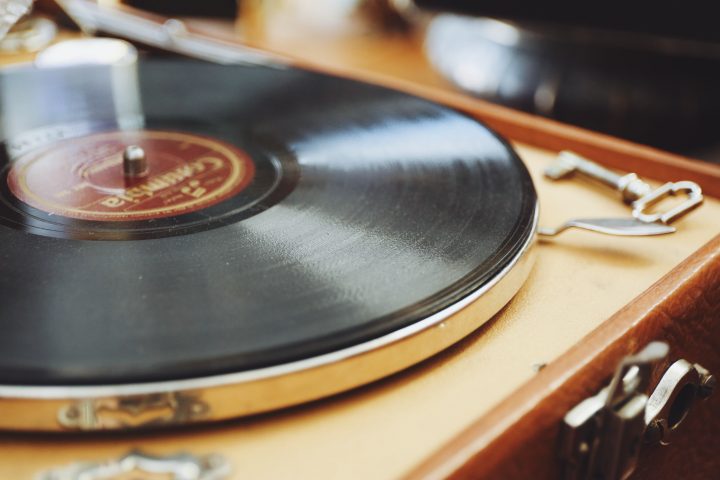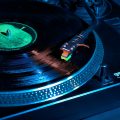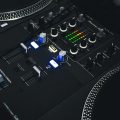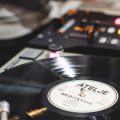Looking to invest in the best manual turntable and take your listening experience to the next level? Want to hear 5 of the most important reasons to buy a manual turntable?
Then join us, as we explore these 5 reasons in depth and explain how you might go about picking a manual turntable for yourself.

We are living in an era where we rely on technology for our entertainment. Everything is done automatically. This, of course, is more convenient, right? But, maybe if we think hard about it, if you can access everything easily, does that take the fun out of it?
Do you think this might apply to turntables as well? Isn’t it better to use a manual turntable instead of an automatic one? Below I explain why a manual turntable can offer your a much more enjoyable experience.
1. More Interactive Experience
Investing in a manual turntable is a real commitment often reserved for those who have been collecting records for a while. Manual turntables are inherently more difficult to use than automatic turntables.
Now, this difference in difficulty is not in any way big, but it still is there.
A fully-automatic turntable is one that does almost all of the work for you. This means that it can place the needle onto the record at the push of a button. And then take it off automatically once it deems the record to have finished. Hence, the fully-automatic turntable title.
A semi-automatic turntable strikes a healthy middle ground between the two. A semi-automatic turntable will only automate one aspect of the needle’s relation to the disc. Semi-automatic turntables, thus, either automatically place the needle onto the disc or automatically take it off once the record has ended. This leaves you to perform the opposite function yourself.
A manual turntable places all of the power in the hands of the user. Yes, that is you! Therefore, you have to place the needle onto the record by hand and then take it off of the face of the record once it has finished playing what it needs to play.
In this way, a good quality manual turntable offers the most immediate and interactive user experience out of the bunch. Automatic turntables tend to encourage complacency in the user. This is why I would encourage even beginners to give a manual turntable a go. Once you have learned how to do it once you can keep on doing it forever.
All of this lends itself to a more involved listening experience too. Even if you are only listening out for the end of the record so you can take off the needle.
2. More Buying Options
There are more options for purchasing an automatic record player than there ever has been – part of the over-saturation of the market today. Even still, there are far more examples of the fully manual turntable out there.
I know plenty of great automatic turntables that are going to be able to do justice to your record collection. But when you get to a certain price range, it seems like all the examples of the fully automatic table fall by the wayside.
Take the Pro-Ject Debut Carbon that everyone raves about these days. This is about as fine an example of a mid-range audiophile turntable as you will find. And nowhere does it feature fully or semi-automatic motion. The sound quality is all there, the ability to rid the record groove of its encumbrance, its power to bring vinyl records to life – and yet, no automation.
This is the case for countless similarly-priced turntables, including anything you can name by Rega, Music Hall, and Clearaudio. Heck, even the Audio-Technica AT-LP120 is only semi-automatic, and that is a fully-fledged DJ turntable from a reliable brand like Audio-Technica.
Indeed, though automatic turntables tend to fall by the wayside at a certain point, those manual turntables can range anywhere from $50 and beyond.
3. More Upgrades
One of the things that perk the ears of audiophiles about manual turntables is the fact that there are more or less infinite ways to upgrade. Anything from a removable dust cover to the stylus is up for adjustment. So, if there is anything about some of the parts of the turntable that are not quite doing it for you, customization is at hand.
Yes, indeed, you can customize just about anything you see:
- This includes the platter. Whose steel construction you would prefer exchanged for an acrylic one so that the vibrations do not have as easy a job of transmitting themselves.
- If you are unhappy with the cables that you are using, then never fear. These are just as replaceable with a set that is more to your liking.
- Perhaps you are unsatisfied with the tonearm or cartridge that came installed with the manual turntable from the factory. These are actually one of the easiest parts of the turntable to switch over. So you should have no trouble exchanging this for something that is more becoming of your tastes.
The list goes on! A reliable rule of thumb is that the more money you invest in the turntable, to begin with, the more options you are going to have later on.
Sure, it might not make as much sense to upgrade a turntable that you did not pay all that much money for in the first place. Why buy a super-expensive cartridge that is over double the price of your brand-new record player?
If you have invested the money, to begin with, though, it makes all the more sense to keep upgrading until you have your dream turntable.
4. More Tracking Force and Anti-Skate Control
The thing with automatic turntables is that they often have options like tracking force and anti-skate control built into the turntable. It sure is nice that they are there. But the fact that they are built into the inner mechanisms means that they cannot be adjusted and fine-tuned the way you might prefer.
Such an act almost diminishes the importance of the two things altogether.
For one, tracking force is incredibly important. If it is set too heavy, the stylus can dig into the groove of the records far more than is necessary. This can cause more wear than it might otherwise, meaning the records will inherently last for less time.
Thus, if you cannot make these fine adjustments yourself, then you are liable to be doing damage to your record collection without even knowing it.
The same goes for the anti-skate mechanism. This is a part of the experience that is intended to counter the tonearm’s tendency to drift toward the center of the record, as per its modus operandi.
When properly adjusted for the cause, ant-skate will allow for the panning of the audio to be correctly balanced. If the tonearm is veering too much toward the center, it will favor one of the sides of the grooves. Thus, one side of the stereo field. It also has a positive effect on inner-groove distortion, soothing it, if not erasing it altogether.
5. A More Original Sound
Automatic turntables are all well and good if you are looking for a convenient experience. Looking at it from a certain angle, it almost seems antithetical to seek a convenient experience like that in a medium that is inherently inconvenient.
The age of the turntable is well and truly over. Anyone looking for a convenient experience might as well go ahead and just stream their music out of a Bluetooth speaker. Turntables have been superseded by more convenient technologies, and yet here we are still using them.
This is by no means an attack on the turntable. Far from it, in fact. What makes listening to music on records so attractive in the 21st century is precisely what makes them so inconvenient.
Besides offering a different tonal quality, they also provide the listener and user with an experience that cannot be found elsewhere. This experience cannot be replicated by any other more conventional means.
So, yes, manual turntables are a little bit more work than their fully or semi-automatic brethren. But this is an inconvenience that, I would argue, should be embraced.
It might be helpful to think of turntables, then, in the sense of actions. A half-measure is an act that is not fully carried out. Whereas a full measure is one that is carried out to its fullest. An audiophile, therefore, might view a fully or semi-automatic turntable as a half-measure, and then view a manual turntable as a full measure.
In this way, we can view manual turntables as the end goal of years of practice and record collecting. The place to direct your headlights so that you may arrive there intact.
Final Tones
So, there you have it! Hopefully, you have been able to glean something from this article about how to buy a manual turntable. If not, do not be afraid to drop a comment below!
FAQs Manual Turntable
Is a manual turntable better?
I would suggest that a manual turntable is not necessarily better. In terms of a convenient user experience, an automatic turntable – whether fully automatic or semi-automatic – will be unmatched. In terms of a more involved user experience with more options to upgrade, then a manual turntable really is the one.
What does a manual turntable mean?
A manual turntable places all of the power in the hands of the user – yes, that is you! Therefore, you have to place the needle onto the record by hand and then take it off of the face of the record once it has finished playing what it needs to play.
Why are high-end turntables manual?
There are a number of reasons why high-end turntables are manual. Manual turntables inherently offer more options for customization, setting them apart from the rest. The user experience is inherently more involved with a manual turntable. There is also a belief that the sound is better overall.







